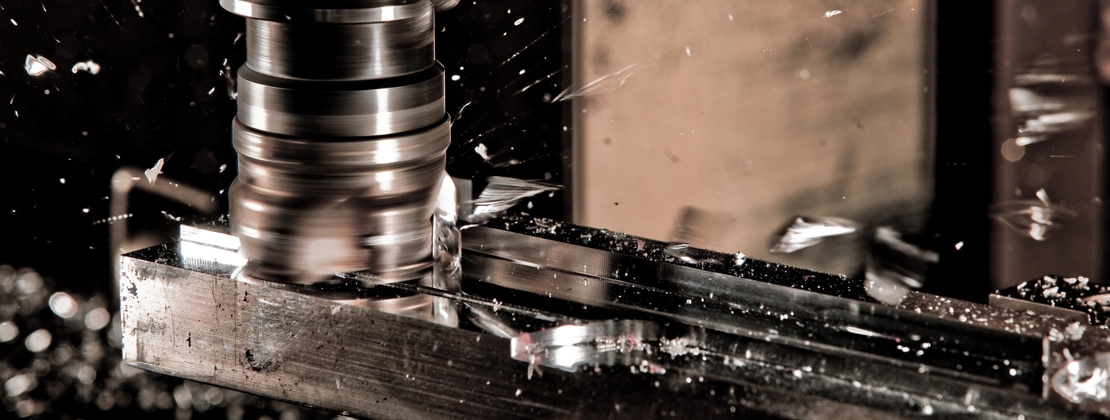

In machining, the cutting speed is one of the most important factors that determines the efficiency and quality of the process.
Cutting speed refers to the speed at which the cutting tool moves across the surface of the workpiece. It is measured in surface feet per minute (SFM) or meters per minute (m/min) and can have a significant impact on tool life, surface finish, and the overall productivity of the machining process.
Use the manufacturer's recommendations: Many cutting tool manufacturers provide recommended cutting speeds for their tools based on their own testing and experience. These recommendations can be a good starting point for determining the appropriate cutting speed.
Use a cutting speed calculator: There are online calculators that can help determine the appropriate cutting speed based on the workpiece material, tool material, and other factors such as the tool diameter and the desired surface finish. These calculators can provide a quick and easy way to determine the appropriate cutting speed, even for those who may not have a lot of experience in machining.
Experiment: In some cases, the best way to determine the appropriate cutting speed is to experiment with different speeds and observe the results.
You can start with a lower cutting speed and gradually increase it until the desired surface finish is achieved or the tool shows signs of wear. This test approach can be time consuming but can provide valuable insights into the performance of a particular tool and workpiece combination.
Rule of thumb: Some general rule of thumb also can be used. For steel, a cutting speed of around 100 SFM is a good starting point. But it's important to note that this will vary depending on the specific steel alloy and the desired surface finish.
The specific type of cutting tool can also affect the cutting speed. For example, the cutting speed for a single-point turning tool will be different than the cutting speed for a multi-point milling cutter.
The cutting speed should also be adjusted based on the specific conditions of the machining process. If the workpiece is being held in a chuck, the cutting speed should be adjusted based on the size of the chuck and the size of the workpiece.
If the workpiece is being held in a vise, the cutting speed should be adjusted based on the size of the vise and the size of the workpiece.
Cutting speed refers to the speed at which the cutting tool moves across the surface of the workpiece. It is measured in surface feet per minute (SFM) or meters per minute (m/min) and can have a significant impact on tool life, surface finish, and the overall productivity of the machining process.
Determining Cutting Speed
There are various methods to determine the appropriate cutting speed for a particular cutting tool and workpiece material.Use the manufacturer's recommendations: Many cutting tool manufacturers provide recommended cutting speeds for their tools based on their own testing and experience. These recommendations can be a good starting point for determining the appropriate cutting speed.
Use a cutting speed calculator: There are online calculators that can help determine the appropriate cutting speed based on the workpiece material, tool material, and other factors such as the tool diameter and the desired surface finish. These calculators can provide a quick and easy way to determine the appropriate cutting speed, even for those who may not have a lot of experience in machining.
Experiment: In some cases, the best way to determine the appropriate cutting speed is to experiment with different speeds and observe the results.
You can start with a lower cutting speed and gradually increase it until the desired surface finish is achieved or the tool shows signs of wear. This test approach can be time consuming but can provide valuable insights into the performance of a particular tool and workpiece combination.
Rule of thumb: Some general rule of thumb also can be used. For steel, a cutting speed of around 100 SFM is a good starting point. But it's important to note that this will vary depending on the specific steel alloy and the desired surface finish.
Factors That Affect Cutting Speed
The cutting speed can vary depending on the specific machining process. The cutting speed for turning will be different than the cutting speed for drilling, and the cutting speed for milling will be different than the cutting speed for grinding.The specific type of cutting tool can also affect the cutting speed. For example, the cutting speed for a single-point turning tool will be different than the cutting speed for a multi-point milling cutter.
The cutting speed should also be adjusted based on the specific conditions of the machining process. If the workpiece is being held in a chuck, the cutting speed should be adjusted based on the size of the chuck and the size of the workpiece.
If the workpiece is being held in a vise, the cutting speed should be adjusted based on the size of the vise and the size of the workpiece.

